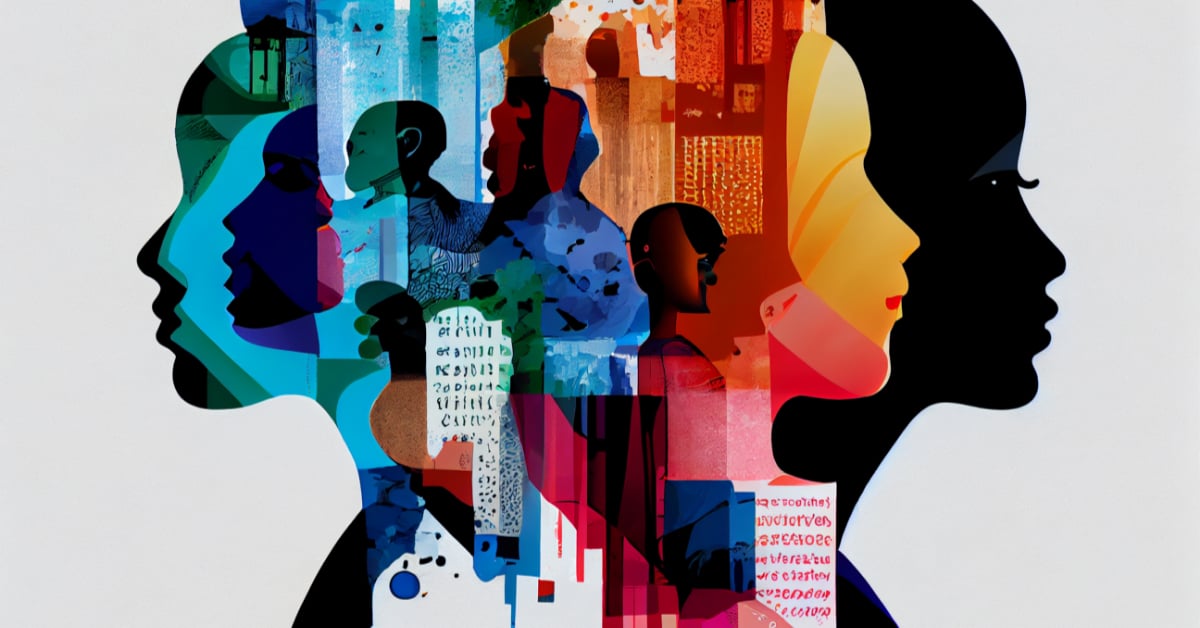In an increasingly globalized and digital world, talent is often viewed through the lens of accessibility, diversity, and opportunity. Yet, certain sectors and industries continue to suffer from the underrepresentation of diverse talent. Traditional hiring practices, societal biases, and a lack of exposure to non-mainstream professions have long left certain groups behind in the race for career opportunities. However, the rise of initiatives like “Spotlight” — programs designed to highlight underrepresented voices and provide a platform for talent to flourish — offers a potential solution to this systemic issue. This article explores how Spotlight can help reveal hidden talent in underrepresented sectors, the challenges these sectors face, and the benefits of diversifying them.
Understanding Underrepresented Sectors
Underrepresented sectors are industries or professions that fail to attract a balanced representation of people across various demographics, including race, gender, socioeconomic background, and disability. In many cases, these sectors suffer from stereotypes, historical biases, and a lack of visibility, which leads to missed opportunities for talented individuals.
Some of the most notable underrepresented sectors include:
- Tech Industry: Despite the tech sector’s growth and influence, people from minority racial, ethnic, and gender backgrounds are still significantly underrepresented. Women, Black, Latinx, and Indigenous people, as well as those with disabilities, face barriers to entering and progressing within the field.
- Creative Arts: Fields like theater, film, and visual arts have long been criticized for their lack of diversity. While there has been significant progress in recent years, many underrepresented groups still struggle to find opportunities and representation.
- Science and Engineering: The STEM fields, while crucial for progress, still show an alarming lack of diversity, especially in higher-level positions. Women and minority groups are often marginalized, with fewer opportunities to climb the career ladder.
- Healthcare: Underrepresentation in healthcare goes beyond just doctors and surgeons. It includes other vital roles such as nursing, mental health professionals, and researchers. These sectors often lack diversity, both in terms of healthcare providers and patients represented in medical research.
- Entrepreneurship: Underrepresented entrepreneurs often face higher barriers to funding, mentorship, and exposure. Women, people of color, and individuals from low-income backgrounds frequently encounter systemic challenges that hinder their success.
Despite the progress in increasing diversity in these areas, much work remains. The talent is undoubtedly there; it’s often hidden because of a lack of platform, opportunity, or exposure.
The Power of Spotlight: What Does It Offer?
Spotlight initiatives aim to provide these underrepresented talents with the recognition, mentorship, and visibility they need to excel. These programs often operate in a variety of ways — from mentorship opportunities to media exposure, workshops, and career support. The primary goal is to give hidden talent the chance to shine in sectors where their contributions might otherwise be overlooked.
The term “Spotlight” itself can be understood both literally and metaphorically. Literally, it represents platforms like media coverage, showcases, or awards ceremonies that shine a light on underrepresented groups. Metaphorically, it refers to efforts made to give individuals a chance to show their skills, ideas, and perspectives to a broader audience. It is a kind of public recognition that goes beyond simply providing a space; it actively promotes and celebrates talent.

Here’s how Spotlight programs can work in practice to uplift talent in underrepresented sectors:
1. Mentorship and Networking Opportunities
One of the most significant barriers to success in underrepresented sectors is a lack of access to mentorship and professional networks. These networks often provide the guidance, advice, and connections necessary for career advancement. Spotlight initiatives can bridge this gap by connecting underrepresented talent with industry leaders and mentors who provide crucial insights and guidance.
2. Exposure Through Media and Public Platforms
Sometimes, talent simply needs to be seen. With increased exposure through media, platforms like TED Talks, social media showcases, and industry-specific platforms, these individuals can gain the recognition they deserve. Exposure helps elevate their work and establishes credibility in an otherwise competitive or homogeneous field.
3. Skill Development Programs
Spotlight programs often include skill development and educational opportunities, such as training, workshops, and courses, to equip individuals with the tools and knowledge to succeed in their field. By targeting skill gaps and providing education tailored to underrepresented groups, Spotlight can level the playing field.
4. Breaking Societal and Cultural Biases
Many people remain unaware of the bias that limits access to certain fields. Spotlight initiatives can work to challenge and dismantle these biases. For instance, campaigns that encourage women in tech or highlight Black scientists can counteract societal stereotypes, showing that talent and innovation are not bound by race, gender, or socio-economic status.
5. Building Confidence and Identity
Underrepresentation often leads to a sense of isolation or a lack of self-belief. Spotlight initiatives can build confidence by showing underrepresented groups that there are others like them who have succeeded, offering a sense of belonging and identity. This is especially important for younger generations considering careers in these fields.
The Impact of Diversity on Innovation and Economic Growth
The inclusion of underrepresented groups in various sectors isn’t just a moral imperative — it’s a strategic one. The benefits of diversity extend far beyond social justice and inclusion. Diverse teams often outperform homogenous ones because they bring a wider range of perspectives, problem-solving strategies, and creative ideas to the table.
Research has shown that diverse teams are more innovative, make better decisions, and drive greater economic growth. By investing in underrepresented talent, sectors can unlock new opportunities, markets, and ideas that would otherwise remain untapped. This is particularly critical in industries like technology, healthcare, and creative arts, where innovation is the lifeblood of progress.
For example:
- In the tech sector, diverse teams have been shown to create products and solutions that cater to a broader range of users, addressing needs and concerns that might otherwise be overlooked.
- In healthcare, a diverse workforce can help ensure that medical practices and policies are more inclusive and culturally sensitive, leading to better patient outcomes.
- In the creative arts, diversity leads to richer, more varied content that resonates with a wider audience, fostering a more inclusive cultural narrative.
Case Studies of Spotlight Success
To better understand the effectiveness of Spotlight initiatives, let’s look at a few case studies of successful programs that have helped reveal hidden talent in underrepresented sectors.

1. Women Who Code
Women Who Code is a global nonprofit organization dedicated to inspiring women to excel in technology careers. Through mentorship programs, technical workshops, and a robust online community, Women Who Code has helped thousands of women gain the skills and confidence they need to thrive in tech. The organization also regularly provides exposure to women-led projects and innovations, helping to bring much-needed diversity to an industry long dominated by men.
2. Black Girls Code
Black Girls Code is another powerful example of a Spotlight initiative that focuses on providing African-American girls with the tools to succeed in technology. The nonprofit offers coding workshops, hackathons, and mentorship programs designed to spark interest in STEM subjects among young Black girls. Since its inception, Black Girls Code has impacted thousands of girls, showing them that tech is a field where they belong.
3. The Women’s Business Enterprise National Council (WBENC)
The WBENC is a nonprofit that helps connect women entrepreneurs with networks, resources, and potential clients. By spotlighting women-led businesses and offering certification for women-owned companies, WBENC has played a crucial role in breaking down barriers to entrepreneurship. Through this initiative, women are not only given the tools to succeed but are also provided with a platform to be seen and heard in the business world.
Challenges and Limitations
While Spotlight initiatives can play a crucial role in increasing diversity, they are not without their challenges. One of the biggest hurdles is ensuring that these initiatives reach those who need them the most. Many underrepresented individuals face multiple barriers, including systemic racism, poverty, and lack of access to basic education. Spotlight programs must work to address these deeper-rooted issues in tandem with providing platforms for exposure and success.
Additionally, even with exposure and visibility, underrepresented groups may still encounter discrimination and bias in the workplace. Therefore, initiatives need to be accompanied by broader systemic changes, including corporate diversity policies, inclusive hiring practices, and ongoing support for employees from marginalized backgrounds.
Conclusion
Spotlight initiatives represent a powerful tool for revealing hidden talent in underrepresented sectors. By providing mentorship, exposure, skill development, and cultural change, these programs help elevate individuals who might otherwise be overlooked. However, while Spotlight programs can significantly impact, they must be part of a larger systemic shift toward more inclusive and equitable practices across industries.
The future of work, innovation, and economic growth depends on tapping into the full range of human potential. If Spotlight initiatives continue to shine a light on underrepresented talent, industries can not only become more diverse but also more dynamic, innovative, and successful.











































